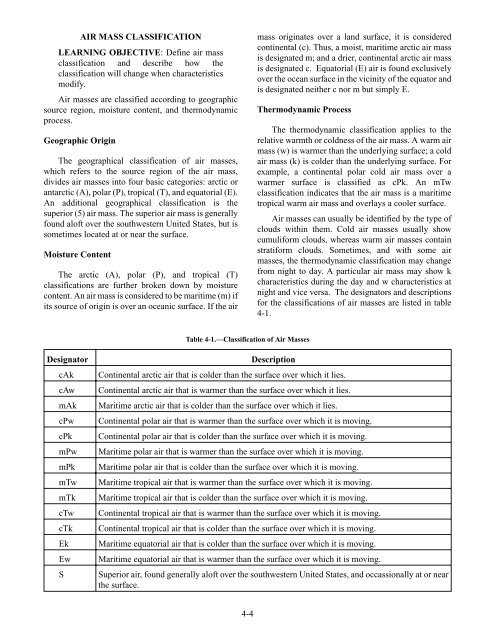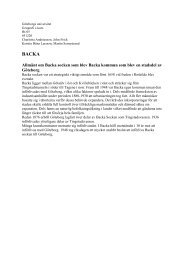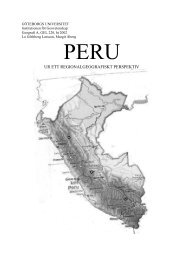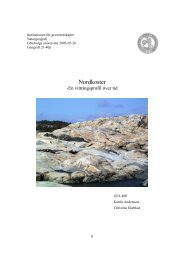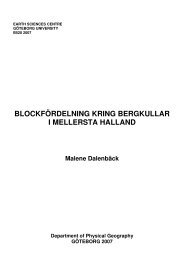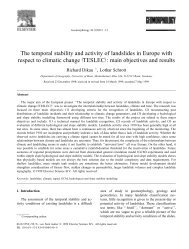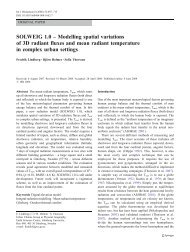AIR MASSES AND FRONTS
AIR MASSES AND FRONTS
AIR MASSES AND FRONTS
Create successful ePaper yourself
Turn your PDF publications into a flip-book with our unique Google optimized e-Paper software.
<strong>AIR</strong> MASS CLASSIFICATION<br />
LEARNING OBJECTIVE: Define air mass<br />
classification and describe how the<br />
classification will change when characteristics<br />
modify.<br />
Air masses are classified according to geographic<br />
source region, moisture content, and thermodynamic<br />
process.<br />
Geographic Origin<br />
The geographical classification of air masses,<br />
which refers to the source region of the air mass,<br />
divides air masses into four basic categories: arctic or<br />
antarctic (A), polar (P), tropical (T), and equatorial (E).<br />
An additional geographical classification is the<br />
superior (5) air mass. The superior air mass is generally<br />
found aloft over the southwestern United States, but is<br />
sometimes located at or near the surface.<br />
Moisture Content<br />
The arctic (A), polar (P), and tropical (T)<br />
classifications are further broken down by moisture<br />
content. An air mass is considered to be maritime (m) if<br />
its source of origin is over an oceanic surface. If the air<br />
4-4<br />
mass originates over a land surface, it is considered<br />
continental (c). Thus, a moist, maritime arctic air mass<br />
is designated m; and a drier, continental arctic air mass<br />
is designated c. Equatorial (E) air is found exclusively<br />
over the ocean surface in the vicinity of the equator and<br />
is designated neither c nor m but simply E.<br />
Thermodynamic Process<br />
Table 4-1.—Classification of Air Masses<br />
The thermodynamic classification applies to the<br />
relative warmth or coldness of the air mass. A warm air<br />
mass (w) is warmer than the underlying surface; a cold<br />
air mass (k) is colder than the underlying surface. For<br />
example, a continental polar cold air mass over a<br />
warmer surface is classified as cPk. An mTw<br />
classification indicates that the air mass is a maritime<br />
tropical warm air mass and overlays a cooler surface.<br />
Air masses can usually be identified by the type of<br />
clouds within them. Cold air masses usually show<br />
cumuliform clouds, whereas warm air masses contain<br />
stratiform clouds. Sometimes, and with some air<br />
masses, the thermodynamic classification may change<br />
from night to day. A particular air mass may show k<br />
characteristics during the day and w characteristics at<br />
night and vice versa. The designators and descriptions<br />
for the classifications of air masses are listed in table<br />
4-1.<br />
Designator Description<br />
cAk Continental arctic air that is colder than the surface over which it lies.<br />
cAw Continental arctic air that is warmer than the surface over which it lies.<br />
mAk Maritime arctic air that is colder than the surface over which it lies.<br />
cPw Continental polar air that is warmer than the surface over which it is moving.<br />
cPk Continental polar air that is colder than the surface over which it is moving.<br />
mPw Maritime polar air that is warmer than the surface over which it is moving.<br />
mPk Maritime polar air that is colder than the surface over which it is moving.<br />
mTw Maritime tropical air that is warmer than the surface over which it is moving.<br />
mTk Maritime tropical air that is colder than the surface over which it is moving.<br />
cTw Continental tropical air that is warmer than the surface over which it is moving.<br />
cTk Continental tropical air that is colder than the surface over which it is moving.<br />
Ek Maritime equatorial air that is colder than the surface over which it is moving.<br />
Ew Maritime equatorial air that is warmer than the surface over which it is moving.<br />
S Superior air, found generally aloft over the southwestern United States, and occassionally at or near<br />
the surface.


